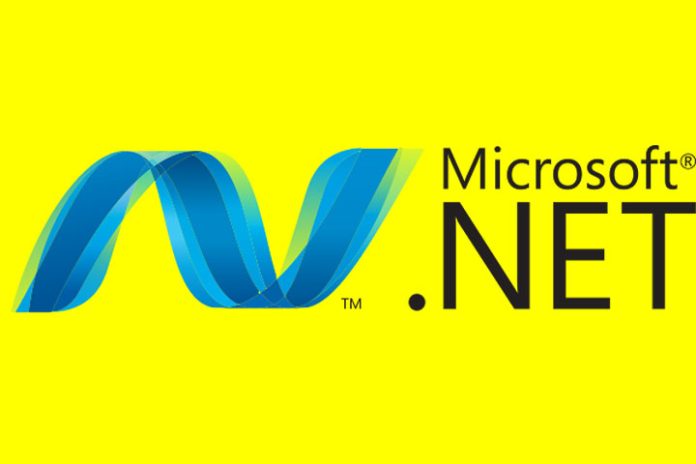In the vast universe of software development, few platforms have left as deep a mark as .NET, the ecosystem created by Microsoft that has evolved to become the backbone of countless business applications and systems around the world. Since its birth, .NET has been a beacon of innovation and versatility, providing developers with a set of exceptional tools to build robust, scalable, high-quality applications. In this article, we will explore its intricate layers, from the Common Language Runtime (CLR) that orchestrates code execution to the various libraries and frameworks that offer solutions to a wide range of development challenges.
What is .NET from Microsoft?
In a world where efficiency and scalability are imperative, .NET stands out as a preferred choice for businesses and individual developers alike. Its ability to facilitate rapid development, effective debugging, and easy deployment of applications has been critical to the success of countless business projects over the years. All this is in direct relation to its ability to unify languages and development environments, providing programmers with a flexible and robust framework for creating applications that range from simple tools to complex business systems, establishing an ecosystem that stands as a pioneer—of technological innovation, allowing organizations to deploy effective and efficient solutions on a broad spectrum of platforms and devices.
At its core, .NET is a runtime environment and framework developed by Microsoft that provides a unified platform for creating and running software applications. This environment is designed to be independent of the programming language used, which means that developers can write code in various languages, such as C#, F#, and Visual Basic, among others, and run it on the .NET platform.
At the heart of .NET is the Common Language Runtime (CLR), an essential component that manages code execution and provides services such as memory management, garbage collection, and exception handling. The CLR interprets and compiles the source code into a common intermediate language (CIL or MSIL), which is then translated into instructions specific to the architecture of the machine on which it is being executed. In addition to the CLR, .NET includes an extensive class library known as the Framework Class Library (FCL), which offers a rich collection of predefined functions and services that developers can use to build applications efficiently and consistently.
Also Read: 5 Emerging Technologies To Accelerate Digital Transformation
.NET components as a tool for Software development
- Common Language Runtime (CLR): It is an essential component that provides a controlled execution environment for .NET programs. The CLR is responsible for managing code execution and facilitating critical tasks such as memory management, garbage collection, and exception management. Additionally, the CLR compiles the source code into a Common Intermediate Language (CIL), allowing execution on multiple platforms without the need for recompilation. This feature is essential for the portability of .NET applications.
- Framework Class Library (FCL): The Framework Class Library, or FCL, is an extensive class library that is an integral part of. NET. This library provides a predefined set of classes, interfaces, and methods that cover a wide range of functionality, from data manipulation to network operations and file manipulation.
- ASP.NET: It is a framework designed specifically for creating dynamic and scalable web applications. It allows developers to build interactive web pages and services using languages such as C# or VB.NET. ASP.NET includes an event-driven programming model and a wide variety of web controls that make it simple to create dynamic, engaging user interfaces.
- Windows Presentation Foundation (WPF) and Windows Forms: Both WPF and Windows Forms are technologies intended for the development of desktop applications in Windows environments. Windows Presentation Foundation focuses on creating rich, engaging user interfaces, allowing developers to design applications with advanced graphics and fluid animations. Windows Forms, on the other hand, provides a more traditional, controls-based way of building desktop applications. Both technologies offer a solid platform for creating intuitive and functional desktop applications.
.NET for digital business applications
NET has established itself as an essential tool in the development of software for companies. Its ability to create custom applications, ERP systems, web solutions, CRM, mobile applications, and BI systems has transformed the way companies operate and engage with their customers. As a whole, .NET enhances innovation and competitiveness in the business world, offering tailored and scalable technological solutions that drive growth and operational efficiency. However, it is essential to identify the potential that these tools can have when it comes to software systems for the business world. Among these, we can mention:
- Industrial Process Control Systems: .NET is used in the development of control systems that supervise and regulate complex processes in sectors such as manufacturing, energy, and the chemical industry. The flexibility of .NET allows for the integration of sensors, actuators, and monitoring systems, giving companies the ability to optimize production and ensure product quality.
- Augmented Reality (AR) and Virtual Reality (VR) Applications: .NET, along with technologies such as Unity and ARKit, enable the development of immersive applications ranging from training experiences to innovative marketing solutions. Companies are using these technologies to create interactive product presentations, training simulations, and memorable customer experiences.
- Sentiment Analysis and Natural Language Processing (NLP ) Systems: .NET is used in the development of applications that use natural language processing techniques to analyze and understand text. This allows companies to extract valuable information from customer interactions, identify trends, and improve the quality of their products and services.
- Real-Time Data Analysis and Prediction Systems: In industries such as logistics and retail, the ability to forecast trends and make decisions in real-time is essential. .NET, along with data processing technologies such as Apache Kafka and Spark, is used in the development of systems that allow companies to analyze large volumes of data in real-time. This will enable them to make informed decisions about inventory, shipping routes, and pricing strategies.
It’s clear that as we move into the future of software development, .NET is emerging as a driving force for innovation and versatility. As the platform continues to evolve, we can expect an emphasis on cross-platform unification, greater adoption of modern architectures, and deeper integration with advanced technologies such as artificial intelligence. These trends are set to change the way we think about and develop software, driving efficiency across all areas of business.


